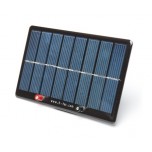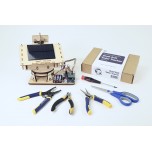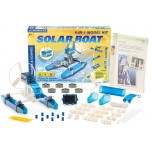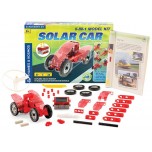Most of us are familiar with solar cells because we encounter them every day – in calculators, street lamps, and traffic road signs. If these devices have enough light, they can theoretically work forever. Solar or photovoltaic (PV) cells are made up of many individuals cell stacked together. The cell material is a semiconductor that conducts electrons when light is absorbed. Figure 1 illustrates the standard solar panel configuration.
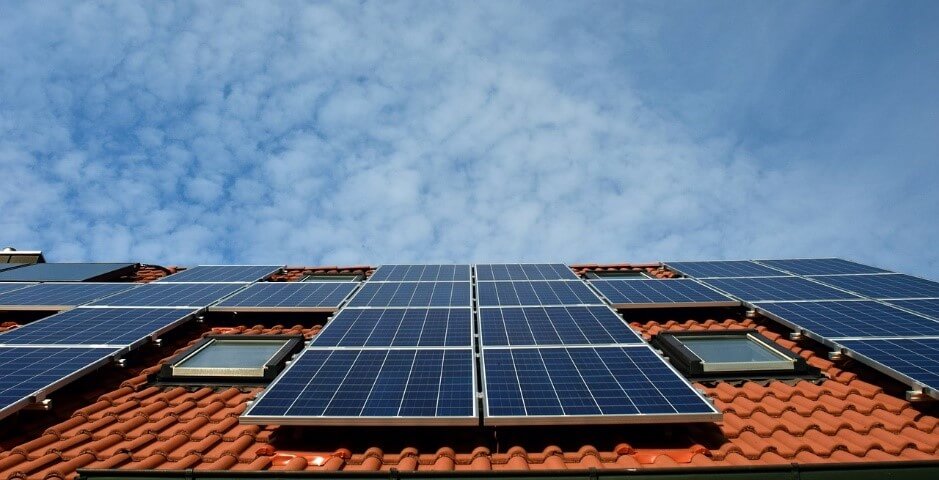
Figure 1. Standard solar cell system
Two major types of PV systems are available in the marketplace today: flat plate and concentrators. Flat plate systems are the most common, and they consist of PV modules on a rigid and flat surface to capture sunlight. Concentrating photovoltaic systems use a specifically designed area of mirrors or lenses to focus the sunlight into a small area of cells. These systems reduce the amount of semiconducting material and improve the performance of the system. If these systems have single or dual axis tracking, they area called Heliostat concentrator photovoltaics (HCPV). Although there are many advantages to this type of system, they have been limited due to the cost of focusing, tracking, and cooling equipment.
When the two systems are compared, flat plate systems are typically less complicated but employ a larger number of cells, while the concentrator systems use smaller areas of cells but require more sophisticated and expensive tracking systems. An image of a flat plate system is shown in Figure 1 and a concentrator system in Figure 2.
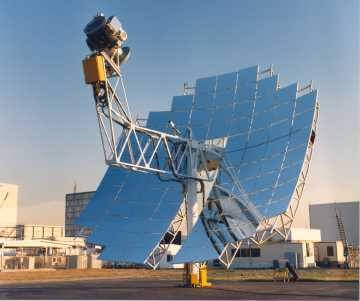
Figure 2. Solar concentrator system
Simple PV systems power many of the small calculators and wrist watches on the market today. Larger photovoltaic systems provide electricity for pumping water, powering communications equipment, and powering entire homes or buildings. PV cells have become one of the major modern energy producers because of the recent improvements in conversion efficiencies, and the lowered costs of PV panels.
Solar cells are usually encapsulated and then connected to form a module. PV panels have a glass layer over the solar cells to protect the semiconductor wafers while allowing light to pass through. Since a single solar cell only provides a voltage of about 1/2 V, it is unable to power a device by itself. Therefore, several cells are connected in series to allow the voltage to be added together. Voltage, current, and resistance are related through an equation called Ohm’s Law, which is:
V = I x R
where V is volts, I is current, and R is the resistance. Cells can be connected in parallel to create higher current. Figure 3 illustrates series and parallel connected PV cells.
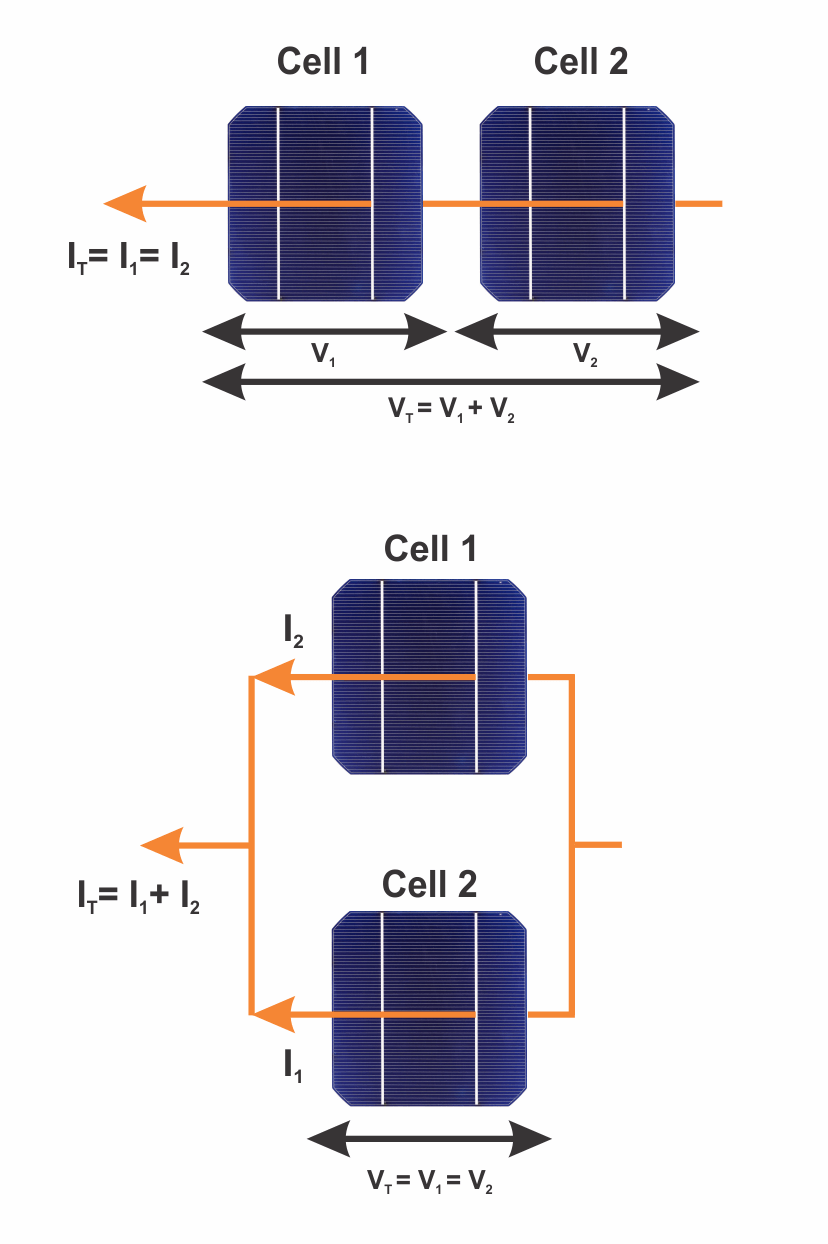
Figure 3. Series and Parallel Connected PV Cells
The power output of a solar array is measured in watts (W) or kilowatts (kW). Power is related to voltage and current through the following equation:
P = I x V
where P is power, I is current, and V is volts. In stand-alone PV systems, batteries can be used to store energy that is not immediately used or to power the load when not enough power is collected.
There is an unlimited number of applications for solar power – these cells can power anything! We already see many solar applications everyday– in street lamps, road signs, residences, and buildings. Solar power has even been investigated for powering cars! Let’s briefly examine residential and automotive solar applications.
There are many details to think about when powering a house using solar power. Figure 4 shows an illustration of a typical home PV system. The first consideration (besides the cost) is to make sure that the roof has the correct angle or orientation to take advantage of the sun’s energy. The system should be inclined at an angle to absorb the maximum amount of energy year-round. Most systems are mounted at a certain angle or incline based upon a roof slope, but here are also systems that can change the angle for the morning, noon, night and seasons. PV panels must not be shaded by trees or buildings because this will substantially reduce the power production.
Each solar system is customized based on the total power requirements and the average monthly sunlight level for the geographical area. The total and peak loads are used to calculate the voltage and current, and therefore, the number of modules to wire in series and parallel.
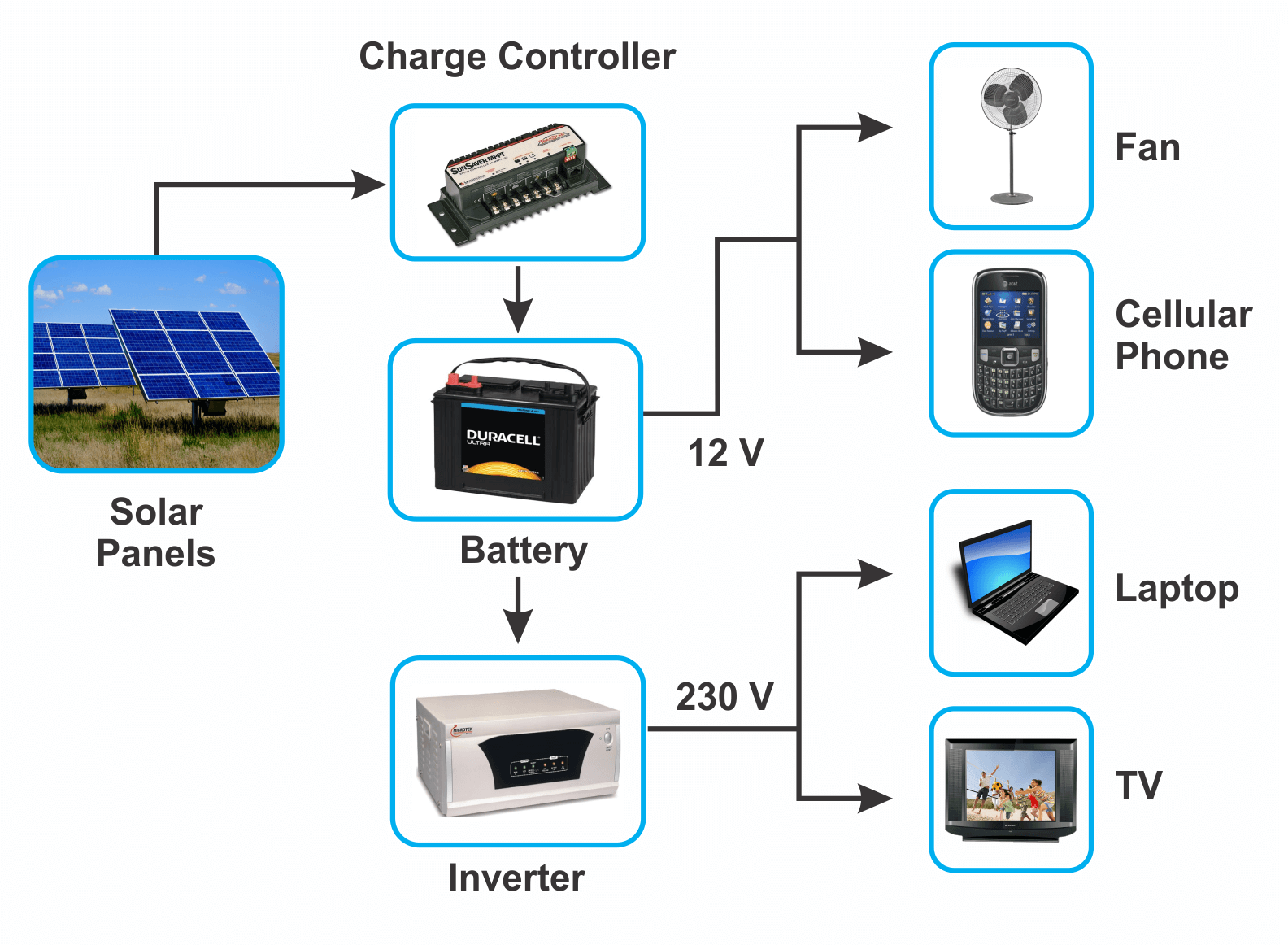
Figure 4. Example Home PV System
When there is no sunlight during the day, the energy can be obtained from an alternative source. Electricity can be used and stored in batteries, fuel cells or the utility grid when necessary. If energy is produced in excess, it can be sold back to the grid. Batteries are commonly used with solar panels systems, but depending upon the battery chemistry, the shelf life varies, and batteries may have to be replaced frequently. Batteries also contain acidic electrolytes, so you need a well-ventilated, non-metallic enclosure for them. A replacement for the batteries typically used with the PV systems is hydrogen fuel cells. Fuel cells will not have to be replaced frequently and have a long shelf life. They also do not require special enclosures.
One other important aspect of a PV system is that the energy generated by the system is in the form of direct current (DC). The electricity supplied by the utility and the type used by the appliances in your house is alternating current (AC). Therefore, a device is needed to convert DC to AC. This device is called an inverter. Some PV systems already have an inverter built into them.
Wouldn’t it be great if we could drive our cars without spending any money on fuel? There are solar powered cars that have successfully run for many miles. The electricity from the solar-powered car charges the battery. Some solar powered cars use the electricity to directly power the motor. A few major automotive makers (Ford and Mazda) have researched solar powered cars. One interesting hybrid car model has been displayed by the French car company, Venturi. The Eclectic car combines solar, wind and battery power to provide electricity for city driving. This model was engineered only for city driving because it can only go up to 30 miles per hour (48 kph). Figure 5 illustrates the Venturi Eclectic car and a solar-powered car.
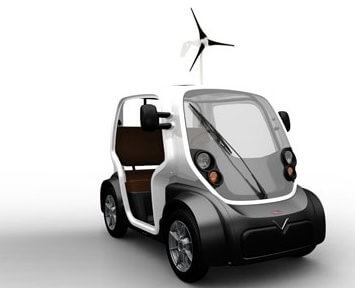
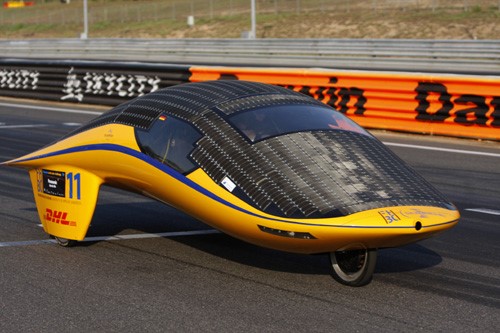
Figure 5. Solar powered cars
Solar cars have been created that can travel for hundreds of miles up to 60 miles per hour (96 kph) using very high-quality solar cells. Achieving higher speeds is also dependent upon weight and aerodynamics of the solar race cars. These cars are usually very flat and can heat up rapidly due to being covered in solar cells. When it is cloudy out, the solar-powered car could use a battery or small gasoline engine as backup power.
Solar power is an essential part of the future renewable energy economy. A PV system can be sized for any load by increasing the number of cells and panels or by changing the connections. PV systems can also be configured into a flat plate or concentric style, depending upon the available sun area and power requirements. Solar panels can be seen daily, from calculators to road signs to buildings. The number of applications for solar power is endless. PV panels for houses is now becoming quite common; however, PV panels for cars have not yet gained traction despite being researched for several decades. Hopefully, some great scientists and engineers will help to make a breakthrough in solar cars in the near future!

 Posted by
Posted by
